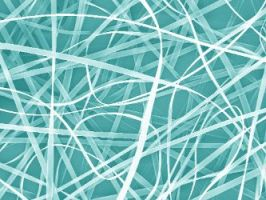ElectroSPUN
 Electrospinning provides an effective route to the preparation of nano and micro fibres of synthetic and biological polymers. It is an enabling technology with applications in biomedical devices, biological structures, drug delivery system, composites, filtration for water, gases, viruses, imobilisation of enzymes and catalysts, photonics, photovoltaics, scaffolds, nano-structures from inorganic materials, sensors, structural studies, textiles and tissue engineering. The technique produces very fine, nano to micrometer diameter, fibres in random mats as shown above or in more controlled structures.
Electrospinning provides an effective route to the preparation of nano and micro fibres of synthetic and biological polymers. It is an enabling technology with applications in biomedical devices, biological structures, drug delivery system, composites, filtration for water, gases, viruses, imobilisation of enzymes and catalysts, photonics, photovoltaics, scaffolds, nano-structures from inorganic materials, sensors, structural studies, textiles and tissue engineering. The technique produces very fine, nano to micrometer diameter, fibres in random mats as shown above or in more controlled structures.
The ESPUN programme at Reading has a dedicated high voltage electrospinning facility and makes extensive use of instrumentation in the Centre for Advanced Microscopy and the Chemical Analytical Facility. It involves (Chemistry), (Chemistry) (CfAM), Professor Paulo Bartolo at the Centre for Rapid and Sustainable Product Development in Leiria, Portugal and Professor Mahadevappa Y Kariduraganavar, Centre of Excellence in Polymer Science, Karnatak University, India.
Electrospinning is observed when a high electric field is applied to a polymer solution or melt. This usually involves a polymer solution in a syringe with an electrically conducting needle and collecting electrode. The application of a large electric field leads to a jet, which is elongated and the process of solvent evaporation leads to the formation of nano-scale fibres. This is illustrated in the Figure above (reproduced from F.J. Davis and G.R. Mitchell in 'Bio-Materials and Prototyping Applications in Medicine' ed P.Bartolo Springer 2007). The fibres may contain nanoparticles to provide active function in both medical & physical science applications.
Current projects include
Reactive Electrospinning Project focuses on developing new materials and new structures by inducing chemical reactions during the electrospinning process.
Electrospinning without polymers is centred on the use of self-assembling or virtual polymers to prepare nanoscale fibres.
Electrospun fibres containing liquid crystal structures
Nanoscale conducting fibres with potential for use in nerve repair and other applications.
Fabrication of aligned arrays of electrospun fibres
Crystallisation in electrospun fibres
Polymer chain conformations in electrospun fibres using small-angle neutron scattering
Biodegradable Nano/Micro Fibres
Recent Publications
Mitchell GR, Belal M, Davis FJ, et al. Defining Structure in Electrospun Polymer Fibres: ADVANCED MATERIALS RESEARCH 55-5733-362008
Delyth E Elliott, Fred J Davis, Geoffrey R Mitchell and Robert H Olley Structure development in electrospun fibres of gelatineJournal of Physics: Conference Series Publication Date: 2009 183 012021
S Sen, F J Davis, G R Mitchell and E Robinson Conducting nanofibres produced by electrospinning Journal of Physics: Conference Series 2009 183 012020
S Mohan, S Sen, G R Mitchell, R H Olley and F J Davis Electrospinning atactic polystyrene: A neutron scattering study Publication: Journal of Physics: Conference Series 2009 183 012019
Mahadevappa Y Kariduraganavar, Frederick J Davis, Geoffrey R Mitchell and Robert H Olley Controlling the electrospinning of fibres of poly(?-caprolactone) using dibenzylidene sorbitol Polymer International in press